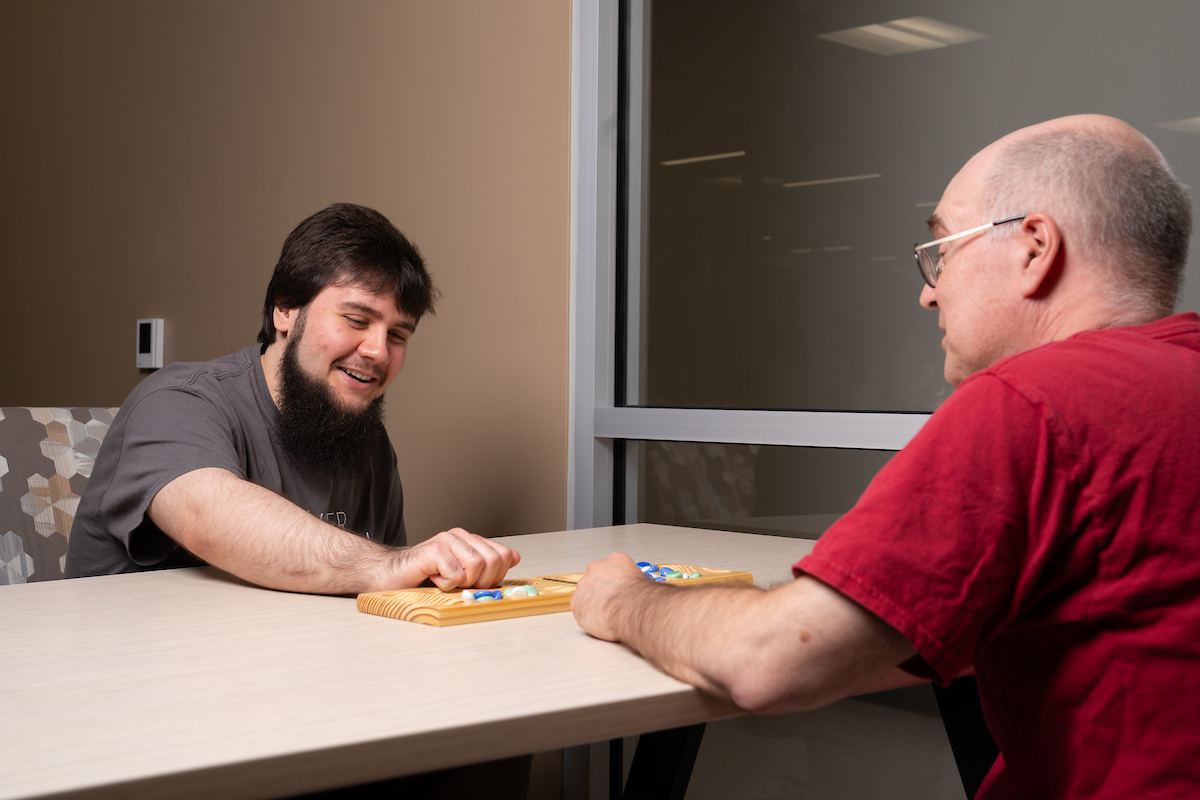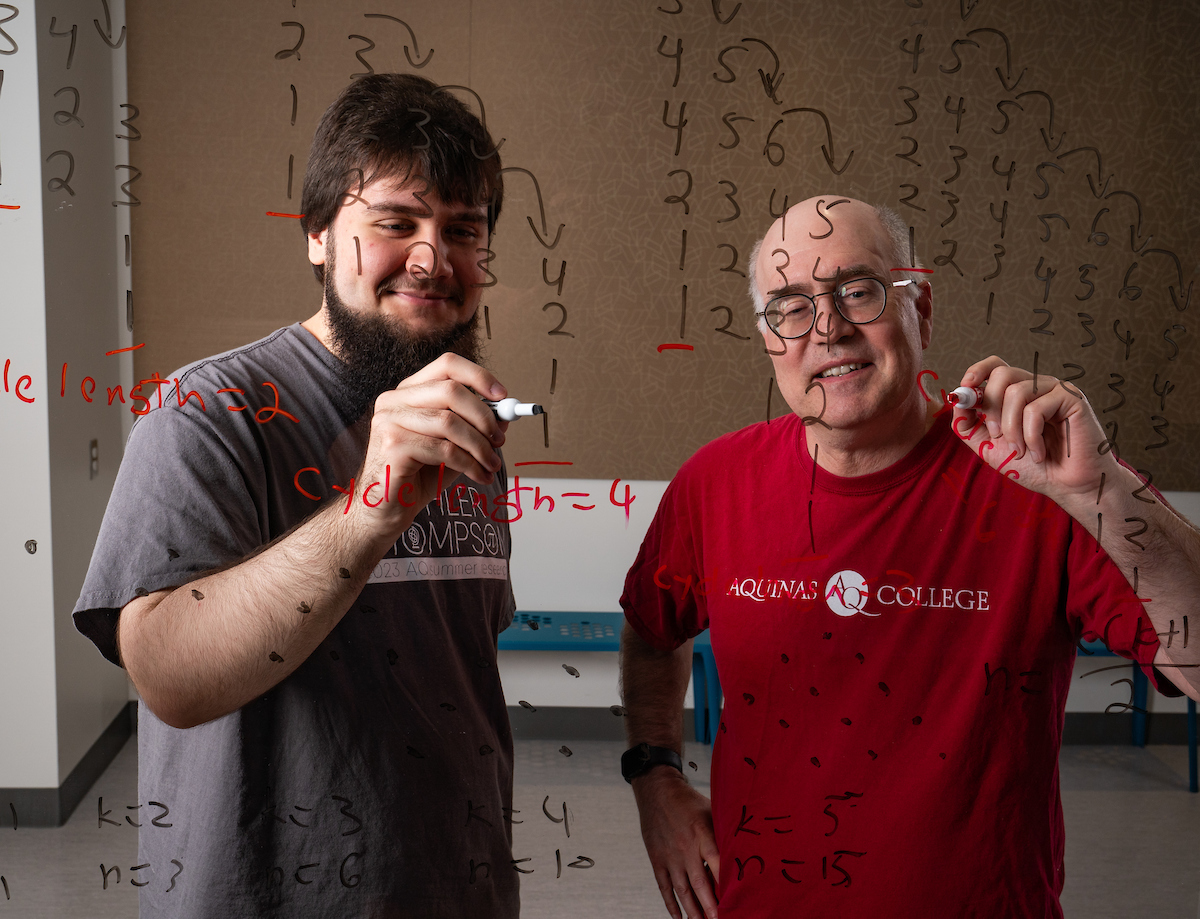Aquinas math professor Dr. Joe Spencer loves board games. He’s well known on campus for hosting board game nights and has a personal collection of over 200 games. This summer, he’s conducting research with Edin Mehanovic, a senior math major and data science minor, through the Mohler-Thompson Summer Research Program to better understand a game mechanism you might recognize: Mancala.
Mancala is ancient. It’s played in several variations all over the world, but it always involves stones and pits. A player scoops stones from a pit and “sows” one of the stones in each of the following pits until their hand is empty. Then, depending on where they land, they might lift another handful and continue the play.

This unique seeding mechanism is at the center of Dr. Spencer and Mehanovic’s research. They’re looking closely into the math behind efficient movement and patterns in the mancala mechanism. To explore the way stones move, they first have to imagine an infinite line of mancala pits, not the circular board you might be used to playing on. Mehanovic and Dr. Spencer are quick to explain that their questions aren’t necessarily going to make you better at Mancala.
“How do I measure what's fast? There's a couple different ways we can do that,” said Dr. Spencer as he drew example pits on a whiteboard. “And what patterns do we want to keep?”
Together, they figured out the easiest number of stones to work with is a triangular number, like 3, 6, or 10. With six moving stones, it’s most efficient to maintain a pattern of 3, 2, 1 across 3 pits. Things get trickier with non-triangular numbers. Other patterns arise, even when using the same number of stones in a different starting arrangement.
The pair began analyzing the cycles of stone distributions across pits. Patterns would reappear after a certain number of seeding cycles. When they finally discovered the formula that explains the cycles of non-triangular numbers, Mehanovic described the moment as “euphoric.”
We asked Dr. Spencer and Mehanovic about the application of their research, and the answer is complicated. It could be connected to waves, but the immediate use is yet uncertain. Both Dr. Spencer and Mehanovic love a good puzzle, so part of it is a deep love for the subject. However, new uses for math are often discovered after the math is understood.
“A lot of the time, people invent math, and then find the why later,” said Dr. Spencer. “You know what complex numbers are? Imaginary numbers? Those were invented. Well, what good are they? It turns out imaginary numbers are perfect for figuring out some things with circuits.”
 Mehanovic is excited to be building his problem-solving skills and working closely
with an expert in his field as a Mohler-Thompson Researcher. He encouraged other students
to apply. “If you have an opportunity to do research, I think it would be very beneficial,
so you can have experience working in the real world,” he said.
Mehanovic is excited to be building his problem-solving skills and working closely
with an expert in his field as a Mohler-Thompson Researcher. He encouraged other students
to apply. “If you have an opportunity to do research, I think it would be very beneficial,
so you can have experience working in the real world,” he said.
Dr. Spencer is delighted to have the opportunity to work closely with students both through summer research and in the small class sizes he is able to teach at Aquinas. “I went to a small liberal arts school and seeing it from their side, I really like it because I get to know the students,” he said. “It's fun to see the growth that happens over the four years that people are here.”
The Mohler-Thompson Summer Research Program was established in 2007 thanks to donations to an annual grant by the Mohler and Thompson families. Their generosity allows students and professors to collaborate on cutting edge research in their respective fields. Aquinas College and the Mohler-Thompson Researchers would like to thank the Mohler and Thompson families for their commitment to advancing our understanding of the world through research.
